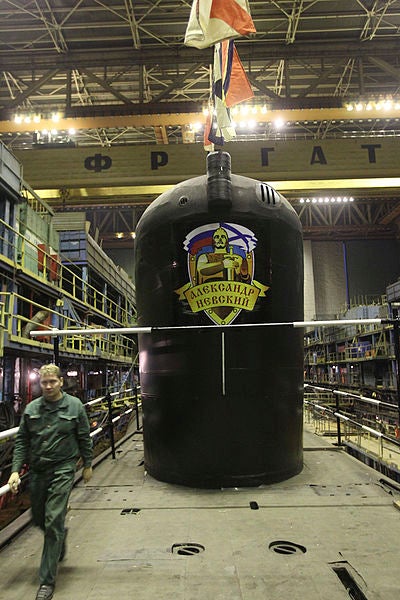
The Russian Navy’s second Borei-class nuclear-powered ballistic missile submarine (SSBN), Alexander Nevsky, has successfully completed another set of sea trials in the White Sea.
During trials, the fourth-generation submarine validated all its onboard systems capabilities in different modes apart from demonstrating propulsive performance and manoeuvrability during previous testing.
The submarine is scheduled to undergo state acceptance trials following completion of Sevmash shipyard’s sea exercises.
Powered by an OK-650 nuclear reactor, AEU steam turbine, SSBN Alexander Nevsky has been designed under Project 955.
The lead submarine of the series, SSBN Yury Dolgoruky, is ready to be delivered to the Russian Navy, while two other vessels, Vladimir Monomakh and Knyaz Vladimir, were laid down recently at the shipyard.
Eight Borei-class submarines are planned to be constructed by 2015 for the Russian Navy to replace the existing Project 941 and Project 667 (Nato Typhoon and Delta-3 and Delta-4)-Class ballistic missile, as part of a state 2020 rearmament procurement programme.
Capable of carrying up to 16 ballistic missiles and torpedoes including Bulava (SS-NX-30) sea-based submarine-launched ballistic missile (SLBM), the 170m-long Alexander Nevsky has a hull diameter of 13m, a crew capacity of 107, a submerged speed of 29k and a maximum depth of 450m.
Moscow Institute of Thermal Technology-built Bulava missile is designed to replace the R-39 solid-fuel submarine-launched ballistic missile (SLBM) for the submarines. It has been designed to carry up to ten MIRV warheads and has a range of more than 8,000km.
Russia is also planning to acquire ten Graney-class nuclear attack submarines, as well as 20 diesel-electric submarines and six Varshavyanka-class vessels.
Image: Russian Navy’s second Borei-class submarine, Alexander Nevsky, undergoing construction. Photo: courtesy of Alexey Kudenko.




